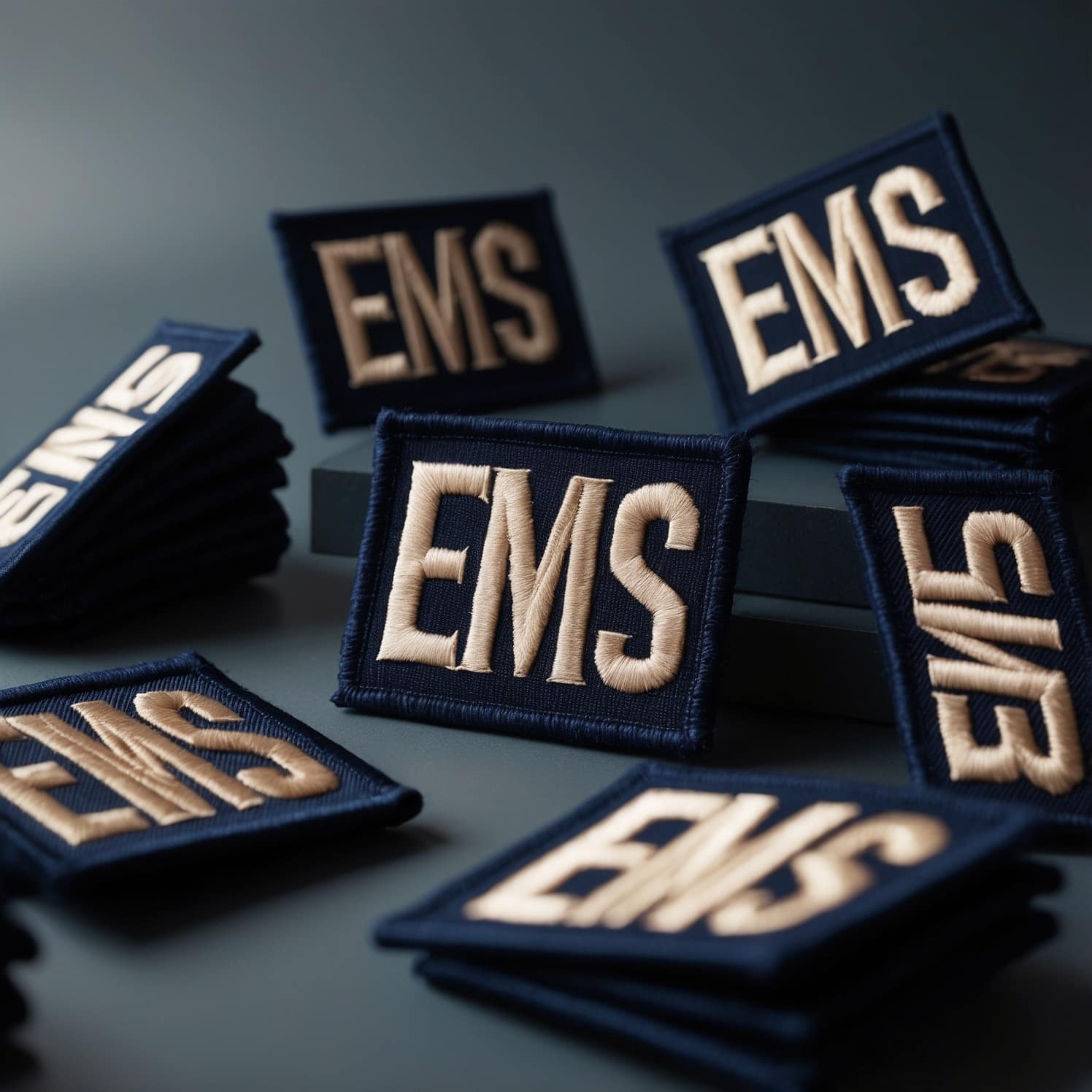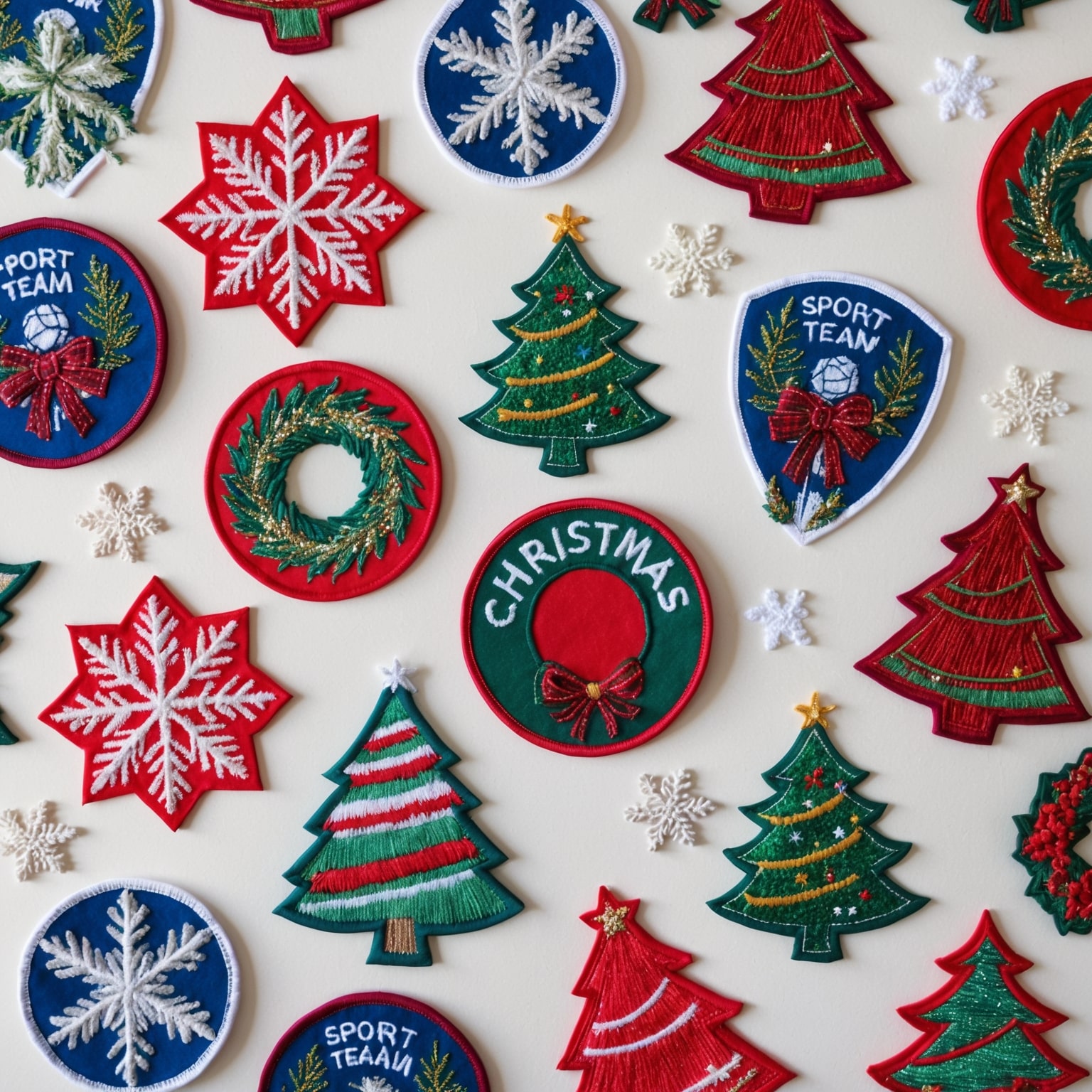In the fast-paced and high-pressure world of Emergency Medical Services (EMS), the symbols and imagery carried by first responders represent more than just aesthetics. They reflect a deep-seated sense of identity, purpose, and service. One of the most iconic symbols in EMS culture is the custom patch. These patches serve multiple purposes—helping identify responders, communicating their level of training or specialization, and reinforcing a sense of unity and camaraderie within a team.
But beyond the practical functions, custom patches used by EMS personnel are packed with meaning and symbolism. Every element, from the colors and fonts to the symbols and shapes, is carefully selected to convey messages of duty, skill, and dedication. Designing a patch is a thoughtful process that blends art and science, resulting in a visual representation that holds significant meaning for those who wear it.
In this article, we’ll explore the art and science behind EMS custom patches. We’ll delve into the historical roots of EMS symbols, examine how modern patches are designed to communicate critical information, and break down the various elements of patch design that make them more than just simple identifiers. By the end, you’ll understand how these small pieces of fabric can carry immense meaning and foster a sense of belonging and pride among EMS professionals.
1. The Role of Symbolism in EMS Custom Patches
Symbols are powerful tools for communication. They allow individuals to convey complex ideas and values through simple, easily recognizable imagery. In EMS, custom patches are not just decorative—they are symbols that communicate an EMS worker’s role, skill level, and commitment to saving lives.
A. A Visual Identity for EMS Professionals
For EMS personnel, custom patches serve as a critical part of their visual identity. When a paramedic or EMT arrives at the scene of an emergency, their patch immediately communicates their professional role to bystanders, fellow responders, and medical staff. The visual recognition of these patches builds trust, ensuring that people know the individual wearing it has the training and expertise to provide medical care in urgent situations.
The standardization of EMS symbols, such as the “Star of Life,” helps maintain consistency and clarity in this visual communication. This iconic symbol, often found on EMS custom patches, is instantly recognizable and provides reassurance in moments of crisis.
B. Fostering Unity and Camaraderie
Beyond identification, custom patches also foster a sense of unity and camaraderie among EMS personnel. Much like military units or law enforcement agencies, EMS teams often design custom patches that represent their department, team, or region. These patches become symbols of shared experience, dedication, and pride in their work.
Wearing the same patch as one’s colleagues builds team spirit and reinforces the idea that each member is part of something larger—a cohesive unit working toward a common goal: saving lives. For many EMS workers, the patch they wear becomes a symbol of their connection to their team, reminding them of the critical role they play in their community’s safety.
C. A Testament to Specialized Skills and Expertise
EMS professionals undergo extensive training, and many specialize in specific areas such as hazardous materials (HazMat) response, critical care transport, or advanced trauma life support (ATLS). Custom patches can be designed to reflect these specializations, providing a visual testament to the skills and expertise that an EMS worker brings to their job.
For example, an EMS team specializing in pediatric emergency care may wear a patch that includes symbols related to children, such as teddy bears or playful imagery. This helps identify the team’s specialized skills while also creating a sense of comfort for young patients and their families.
2. The Historical Roots of EMS Symbols and Patches
To understand the symbolism behind modern EMS custom patches, it’s important to take a look at the history of EMS symbols and how they have evolved over time. EMS symbols have deep roots in the history of medical services, many of which have been adapted from ancient and classical traditions.
A. The Star of Life: A Universal EMS Symbol
One of the most recognized symbols in EMS patches is the “Star of Life,” which was adopted by the U.S. National Highway Traffic Safety Administration (NHTSA) in 1977. The Star of Life consists of a blue, six-pointed star with a rod of Asclepius in the center. The rod of Asclepius, an ancient Greek symbol depicting a serpent entwined around a staff, has long been associated with healing and medicine.
Each of the six points on the Star of Life represents a different aspect of EMS care:
- Detection
- Reporting
- Response
- On-scene care
- Care in transit
- Transfer to definitive care
The Star of Life is now a universal symbol used on custom patches, uniforms, ambulances, and other EMS-related materials around the world. Its widespread use ensures that people can easily identify EMS workers, regardless of where they are or what language they speak.
B. Borrowing Symbols from the Military and Other First Responders
EMS services in many countries, including the U.S., have historically borrowed elements from military organizations. The use of insignias, ranks, and patches to identify personnel and display expertise can be traced back to military traditions.
In the 20th century, as EMS services became more formalized, many EMS organizations adopted symbols similar to those used by police and fire departments. These symbols helped establish EMS as a respected, professional field and allowed for easier collaboration between first responders in emergencies.
Some custom patches also incorporate elements of police or firefighter symbolism, especially in departments where EMS, fire, and police services work closely together. For example, an EMS patch might include the Maltese cross—a symbol widely associated with firefighters—as a way to signify the close partnership between these different emergency services.
3. The Art of Designing Custom Patches for EMS
The design of a custom patch for EMS professionals is a delicate balance between aesthetic appeal, practicality, and symbolism. Designers must consider a variety of elements, including color, shape, and imagery, to create a patch that accurately reflects the values and mission of the EMS team.
A. Choosing Colors with Purpose
Color plays a critical role in the design of custom patches, as different colors evoke different emotions and meanings. In EMS patches, colors are often chosen not just for aesthetic reasons but for the messages they convey.
- Blue: Often associated with trust, reliability, and calmness, blue is a dominant color in EMS patches, especially with the Star of Life. It represents the stability and professionalism of EMS personnel, reassuring the public that they are in safe hands.
- Red: Red symbolizes urgency, danger, and the life-saving role of EMS workers. It is frequently used to emphasize the critical nature of the EMS profession and the life-or-death situations EMS personnel face every day.
- Gold or Yellow: These colors are often used to symbolize excellence, courage, and honor. Patches that include gold or yellow accents may indicate higher-ranking personnel or symbolize the noble mission of EMS teams.
- Black: Black can be used in custom patches to signify seriousness, authority, or solemnity. It is often used in memorial patches to honor EMS workers who have lost their lives in the line of duty.
Color combinations are also carefully chosen to ensure visibility and readability. For example, white text on a black background provides a sharp contrast that is easy to read, even from a distance.
B. The Power of Shapes and Icons
The shape of a custom patch can also carry meaning. While circular or rectangular patches are the most common, many EMS patches incorporate unique shapes that reflect the identity of the team.
- Shield Shapes: Shield-shaped patches are often used to represent protection, strength, and resilience. They are commonly seen in law enforcement, fire services, and EMS, symbolizing the role of these professionals as protectors of the public.
- Crosses: The Maltese cross, long associated with firefighters, is sometimes integrated into EMS patches to represent the close relationship between EMS and fire services. The cross also has historical significance as a symbol of protection and service.
- Stars: As seen in the Star of Life, stars are often used to symbolize guidance, excellence, and life-saving efforts. The six-pointed star, in particular, is a common shape for EMS patches.
In addition to shapes, icons play a critical role in custom patch design. From medical symbols such as the rod of Asclepius to depictions of medical equipment like stretchers, ambulances, or helicopters, the imagery on a patch tells the story of the EMS team’s mission, expertise, and area of specialization.
C. Fonts and Text: Communicating Identity and Values
The choice of fonts and text placement on custom patches is another key design element. While the imagery on a patch may communicate a general message, the text provides specific information about the EMS team, department, or individual.
- Department or Team Name: Most EMS custom patches include the name of the team, department, or agency. This helps identify the individual as part of a larger organization and allows for easy recognition in multi-agency responses.
- Rank or Title: Some custom patches include the rank or title of the wearer, such as “Paramedic,” “EMT,” or “Flight Nurse.” This provides important information about the level of training and expertise of the EMS professional, ensuring that other responders know what role they play in an emergency.
- Specializations: EMS workers who specialize in certain areas, such as HazMat or critical care transport, often wear patches that indicate their expertise. The text on these patches may include abbreviations or certifications that highlight their specific qualifications.
Fonts are chosen for readability and style. Bold, sans-serif fonts are typically used for the main text to ensure legibility, while script or decorative fonts may be used for special elements such as slogans or team mottos.
4. The Science Behind Custom Patches: Durability and Functionality
While the artistic elements of custom patch design are critical for communicating meaning, the science behind patch construction ensures that these symbols remain durable and functional in the demanding environments faced by EMS personnel.
A. Material Choices for Long-Lasting Patches
EMS professionals work in tough conditions, often facing exposure to harsh weather, bodily fluids, and constant physical wear and tear. As a result, custom patches must be made from materials that can withstand the rigors of the job.
- Embroidered Patches: Embroidery is a popular method for creating durable and visually appealing custom patches. Embroidered patches are made by stitching threads onto a backing material, creating a textured surface that is both eye-catching and long-lasting. These patches are often coated with heat-seal backing, allowing them to be easily affixed to uniforms.
- PVC Patches: For environments where moisture or exposure to chemicals is a concern, many EMS teams opt for PVC (polyvinyl chloride) patches. These patches are made from a flexible plastic material that is waterproof, resistant to dirt, and easy to clean. PVC patches can be molded into detailed, high-relief designs, making them a durable and practical choice for EMS personnel.
- Reflective Patches: In low-visibility or nighttime conditions, reflective custom patches enhance the visibility of EMS workers. These patches are coated with reflective materials that shine brightly when exposed to light, ensuring that EMS professionals can be easily seen by other responders or motorists in emergency situations.
B. Functional Features for Practical Use
Beyond durability, custom patches for EMS workers must be functional. Many patches are designed with features that enhance their practicality and ease of use.
- Velcro Backing: Many EMS uniforms feature Velcro panels that allow custom patches to be easily attached or removed. This is especially useful for professionals who work in multiple roles or switch between different teams, as they can quickly change their patches to reflect their current assignment.
- Heat-Sealed Backing: Patches that are permanently affixed to uniforms often use heat-sealed backing, which ensures that the patch remains securely attached even in high-stress situations. This method is especially useful for embroidered patches that need to withstand frequent washing and wear.
- Durable Stitching: Reinforced stitching is essential for ensuring that custom patches remain intact despite constant use. High-quality stitching helps prevent fraying and ensures that the patch maintains its shape and design over time.
5. The Emotional and Psychological Impact of Custom Patches
While custom patches serve practical functions in EMS work, their emotional and psychological impact cannot be overlooked. For many EMS workers, the patch they wear on their uniform carries deep personal meaning, representing their commitment to serving others and the pride they feel in their profession.
A. A Symbol of Commitment to Service
For EMS personnel, wearing a custom patch is a visual declaration of their commitment to public service. The patch represents the years of training, dedication, and sacrifice that EMS workers invest in their careers. It serves as a reminder of their responsibility to protect and care for the public, no matter the circumstances.
Many EMS professionals view their patches as a source of pride, especially when they earn a patch that reflects a hard-won certification or specialized skill. The emotional connection to these patches can be profound, as they serve as both a personal achievement and a representation of the EMS worker’s role in their community.
B. Honoring Fallen Heroes
In the EMS community, custom patches are often used to honor the memory of fallen colleagues who lost their lives in the line of duty. Memorial patches may include the name, badge number, or image of the fallen hero, providing a lasting tribute to their service and sacrifice.
These memorial patches carry immense emotional weight for the EMS community, as they remind workers of the dangers they face and the bravery required to carry out their mission. Wearing a memorial patch is a way for EMS professionals to honor the legacy of their fallen comrades and reaffirm their commitment to the values of their profession.
The Power and Meaning of EMS Custom Patches
In the world of Emergency Medical Services, custom patches are far more than just uniform decorations. They are rich with symbolism, representing the identity, expertise, and commitment of EMS personnel. From the carefully chosen colors and shapes to the meaningful icons and text, every element of a custom patch is designed to communicate important messages about the wearer and their role in the EMS community.
Beyond their practical uses, custom patches foster a deep sense of belonging, pride, and camaraderie among EMS workers. They serve as a testament to the dedication and service of those who respond to emergencies, often at great personal risk. For EMS professionals, wearing a custom patch is a powerful reminder of their mission, their skills, and the lives they are sworn to protect.
Moreover, custom patches create a connection between past, present, and future members of EMS teams, allowing veterans to pass down traditions and values to new recruits. This sense of continuity helps preserve the integrity and ethos of EMS service, ensuring that the principles of honor, bravery, and service remain at the forefront. As the field of EMS continues to evolve, custom patches will remain a vital part of the profession’s identity, providing both practical and emotional support for those who serve on the front lines of emergency medical care. They are, in essence, symbols that encapsulate the heart and soul of emergency response work.
If you are interested in purchasing high-quality custom patches, feel free to call us at 1-877-503-8485 or fill out one of our FREE quotes here.




